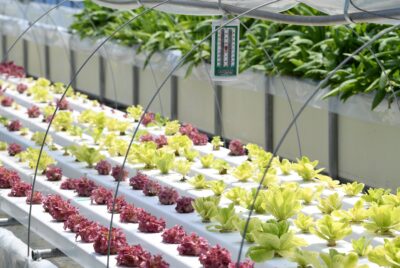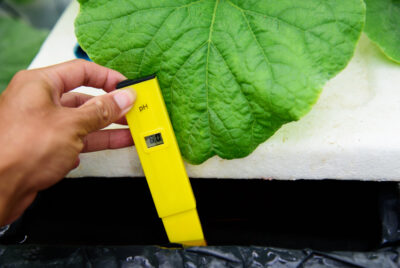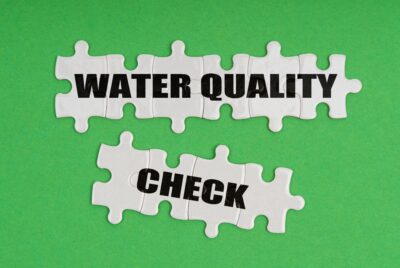Hydroponic Growing Medium
We may earn a commision from purchases made using our links. Please see our disclosure to learn more.
Hydroponic Growing Medium: A Comprehensive Guide for Enthusiasts.
Hello, fellow gardeners! As a hydroponics enthusiast, I’m excited to delve deep into the fascinating world of hydroponics with you, specifically focusing on the all-important aspect of the hydroponic growing medium. Ready to get your hands dirty? Well, not literally, of course!
What is Hydroponics? Understanding the Basics
Hydroponics – sounds fancy, doesn’t it? It’s a revolutionary gardening method that has been changing the face of agriculture. It involves growing plants without soil, instead, nutrients are delivered directly to the roots via a water-based solution using the appropriate hydroponic instruments and controllers. Think of it as giving your plants a non-stop, all-you-can-eat buffet of exactly what they need to grow.
Importance of Growing Medium in Hydroponics: Choosing the Right Medium
But here’s the thing – even in hydroponics, plants need support to grow, and this is where the growing medium comes in. The medium anchors the plant’s roots, giving it a stable foundation, and additionally, it often plays a role in nutrient delivery. It’s kind of like the home where your plant lives – choosing the right one can make all the difference!
Types of Hydroponic Growing Mediums
Several mediums can be used in hydroponics, and today, we’re going to take a look at a few of my favorites:
-
Coconut Coir
Coconut coir, made from the husks of coconuts, is an eco-friendly choice that’s quite popular among hydroponic growers. It’s like giving your plants a tropical vacation! It retains water well and is great at wicking nutrients to the roots.
Benefits of Coconut Coir
This medium is sustainable, renewable, and has great aeration properties. It also has a near-neutral pH, which is just what most plants like.
-
Expanded Clay Pebbles
These are round, lightweight balls of clay that are ‘popped’ under high heat.
Benefits of Expanded Clay Pebbles
They have excellent drainage and are not compact, making them perfect for systems where good root aeration is necessary.
-
Rockwool
This is a fibrous material that is made from basalt rock and chalk. It is often used in seed propagation with a hydroponic wick system.
Benefits of Rockwool
It has excellent water and air retention capabilities, making it popular among hydroponic growers.
-
Perlite
Perlite is a type of volcanic glass that’s heated until it puffs up like popcorn.
Benefits of Perlite
It’s incredibly lightweight, has great drainage properties, and doesn’t degrade over time. It’s kind of like the superhero of hydroponic mediums!
Choosing the Best Hydroponic Growing Medium for Your Needs
Now comes the million-dollar question: How do you choose the best medium for your hydroponics system? Here are a couple of pointers:
-
Consider Your Crop
Different plants have different needs. Some prefer more water, some prefer more air. Choose a medium that matches your plant’s preferences, like choosing the best neighborhood to live in.
-
Consider Your Hydroponic System
Not all mediums are suited for all systems. For instance, lightweight mediums like perlite might not be the best choice for a deep water culture system, because it could float away!
Maintaining Your Hydroponic Growing Medium
Once you’ve chosen your medium, you’ve got to take care of it, just like you’d take care of your plants:
-
Regular Cleaning and Reuse
Many mediums can be cleaned and reused, saving you money and helping the environment. Win-win, right?
Keeping an eye on the pH level of your medium is crucial. If it gets too high or too low, your plants might not be able to absorb all the nutrients they need. It’s like trying to drink a smoothie through a tiny straw – not very effective!
The Future of Hydroponic Growing Mediums
With advancements in technology, who knows what exciting new hydroponic mediums will become available in the future? Maybe one day we’ll be growing plants in moon dust!
Conclusion
Choosing the right inert planting medium can seem daunting, but remember, it’s all about understanding your plants’ needs and matching them to the right home. So get out there and start experimenting – your plants will thank you!
FAQs
What’s the best hydroponic medium for beginners?
Expanded clay pebbles are a great starting point due to their ease of use and versatility.
Can I mix different types of hydroponic mediums?
Absolutely! Mixing mediums can give you the benefits of both, just like mixing chocolate and vanilla ice cream.
Are growing mediums reusable?
Yes, many can be cleaned and reused, although this process varies depending on the type of medium.
What’s the ideal pH for a hydroponic medium?
Generally, a pH between 5.5 and 6.5 is best for most plants.
Can I use regular garden soil as a hydroponic medium?
I wouldn’t recommend it. Soil can introduce pests and diseases into your hydroponic system and doesn’t provide the same level of aeration and drainage as other mediums.





Comments are closed.